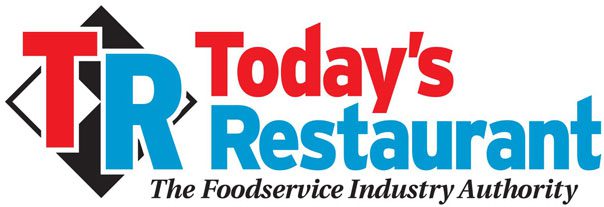
Natural Disasters/ Hurricane-Ready: Emergency Planning for Restaurants and Small Businesses
By Paul Segreto
With the arrival of June 1st, hurricane season officially begins—bringing the potential for powerful storms that can severely disrupt daily operations for businesses across coastal and inland regions alike. From wind and water damage to power outages and prolonged business closures, these natural disasters don’t just threaten property—they can endanger employees’ safety, destabilize customer trust, and jeopardize long-term business viability.
Restaurants and small businesses each face unique risks. Restaurants deal with highly perishable inventories and immediate foot traffic disruption. Small businesses—ranging from retail to service-based firms—must safeguard critical data, communications, and client relationships. Despite their differences, both share a common need: resilient emergency planning and swift post-storm recovery strategies.
What follows is a comprehensive breakdown of how both sectors can prepare, respond, and recover efficiently, ensuring minimal operational disruption and long-term stability.
For Restaurants: Preserving Service, Safety, and Stability
The Restaurant Owner’s Hurricane Challenge
Restaurants are particularly exposed during hurricane season. Delicate inventory, day-to-day staffing needs, and a dependency on foot traffic make it critical to plan for downtime, resource allocation, and communication. With severe weather, time is not a luxury—it’s a liability. 
Building a Restaurant-Specific Emergency Contingency Plan
An effective plan isn’t just a checklist—it’s a living document that prioritizes safety and continuity.
Key Components:
- Risk Evaluation: Assess your restaurant’s vulnerability to high winds, storm surges, and flooding. Identify areas where loss prevention efforts (like sandbags or window reinforcements) will be most impactful.
- Inventory Action Plan: Establish guidelines for food preservation or donation. Coordinate with food banks or shelters to divert unused but safe inventory.
- Employee Support Systems: Define team roles for pre- and post-storm tasks (such as equipment shut-down or reopening inspections). Establish emergency payroll advances or stipends to support staff during closures.
- Vendor and Supplier Coordination: Keep close communication with distributors. Understand what backup sources are available in case regular supply lines are disrupted.
- Communication Channels: Set up backup social media managers, email lists, and signage plans. Consistent communication keeps your brand visible and your customers informed.
Coping with Power & Communications Disruptions
- Install Backup Power: Invest in a generator powerful enough to support refrigeration and basic lighting. Schedule regular maintenance.
- Preserve Digital Operations: Use a cloud-based POS and accounting system. Ensure your CRM, recipes, inventory logs, and employee schedules are accessible offsite.
- Emergency Communications: Equip key team members with backup mobile chargers. Establish emergency codes or keywords for text updates among staff.
Navigating Temporary Closures or Relocations
- Alternative Service Options: Prepare for pop-up kitchens, mobile food trailers, or partnerships with shared commissary kitchens.
- Digital-Only Days: When physical space is inaccessible, consider selling gift cards or running delivery-only menus to maintain cash flow.
- Insurance Documentation: Take detailed photos and conduct video walkthroughs post-storm to expedite insurance claims.
Reopening and Recovery
- Safety Comes First: Do not reopen without first inspecting HVAC, electrical, refrigeration, and plumbing systems. Sanitize thoroughly.
- Phased Menu Relaunch: Begin with a limited menu to test kitchen capacity and restaff gradually.
- Community Connection: Offer specials to emergency responders, or reopen with a “Welcome Back” celebration to signal resilience and solidarity.
For Small Businesses: Safeguarding Operations and Client Trust
The Small Business Reality During Hurricanes
Whether you’re running a retail store, a creative agency, or a professional services firm, hurricanes can wipe out more than your premises—they can threaten the continuity of your customer relationships, cash flow, and ability to deliver. The cost of downtime is especially high when there are tight deadlines, limited staff, or location-specific services.
Creating a Tailored Contingency Plan
A small business’s plan must address internal systems, customer service, and operational logistics.
Core Elements:
- Risk Review: List your core business functions and evaluate their vulnerability. Prioritize what must be protected to stay operational or recover quickly.
- Data Backup: Use offsite or cloud-based systems for storing customer records, financials, marketing assets, and contracts. Test accessibility regularly.
- Staff Communication: Develop a protocol for remote communication. Assign team leads to check in with others and ensure they are safe and accounted for.
- Client Management: Set up client alerts in your CRM or project management software to inform them of delays or adjustments in services.
Managing Utility Failures and Inaccessibility
- Generator Readiness: Consider portable power sources to keep your server or key systems active.
- Redundant Connectivity: Use backup internet services (like a cellular hotspot) and store files in platforms such as Google Drive, Dropbox, or OneDrive.
- Call Routing and Messaging: Use cloud-based VoIP systems to reroute calls and update voicemail with emergency messaging.
Continuing Business Remotely
- Virtual Operations Protocol: Ensure employees can work remotely with secure logins and data access.
- Customer Support Plan: Have a dedicated contact (or chatbot) to address customer concerns and provide timelines. Keep a library of FAQ responses ready for rapid distribution.
- Invoice & Payroll Systems: Cloud-based platforms like QuickBooks, Gusto, or Xero can ensure ongoing financial operations, even from home.
Fast-Tracking Recovery
- Damage Audits: Document all damage immediately, using time-stamped photos and detailed logs for insurance and SBA disaster relief.
- Soft Reopening Strategy: Focus on core services first. Resume secondary services once team members return and suppliers stabilize.
- Partnerships: Collaborate with neighboring businesses or co-working spaces to temporarily relocate or resume operations.
Shared Best Practices for All Businesses
Keeping Customers Informed
Proactive communication is key to customer retention during uncertain times.
Effective Communication Tactics:
- Multi-Platform Updates: Use social media, email, SMS, and your website to provide real-time updates.
- Transparency: Be clear about delays or closures. Customers appreciate honesty and human connection.
- Automated Messaging: Update your voicemail and website homepage with storm-related service notices and estimated timelines.
- Rebuild Trust Post-Storm: Use reopening announcements, promotions, or behind-the-scenes updates to re-engage your audience and rebuild momentum.
Final Thoughts: Resilience is a Process, Not a Moment
While no one can control the weather, every business can control how it prepares and how quickly it bounces back. For restaurant and small business owners alike, hurricane preparedness isn’t just about crisis response—it’s about long-term resilience, community leadership, and operational foresight.
By investing the time to create robust contingency plans, secure communication systems, and post-storm recovery strategies today, you can protect your business’s future tomorrow. In doing so, you not only weather the storm—you position your business to emerge from it stronger, smarter, and even more trusted by those you serve.
Make this a safe hurricane season. Make it happen. Make it count!
About the Author
Paul Segreto brings over four decades of hands-on experience in franchising, restaurants, and small business development. A passionate advocate for entrepreneurship, Paul has guided countless individuals on their journey to success, whether they are established entrepreneurs or just beginning to explore the path of business ownership.
Named one of the Top 100 Global Franchise and Small Business Influencers, Paul is also the voice behind the Acceler8Success Cafe, a daily content platform where thousands of entrepreneurs gain insight and motivation. A lifelong advocate for ethical growth and brand integrity, Paul continues to coach founders, franchise leaders, and entrepreneurial families, helping them find clarity in chaos and long-term success through intentional leadership.
Ready to take your next step in business or looking for expert insight to overcome today’s challenges? Reach out directly to Paul at paul@acceler8success.com — your path to success may be one conversation away.
About Acceler8Success Group
Acceler8Success Group is a multifaceted business advisory platform committed to empowering entrepreneurs, small business owners, franchise professionals, and industry leaders through strategic consulting, coaching, and curated content.
With a strong focus on entrepreneurship, franchising, restaurants, and small business growth, Acceler8Success Group delivers actionable insights and real-world strategies across its suite of brands, including the following:
Acceler8Success, FranchiseReclaim, OwnABizness.com, Accelerate Success Coaching, Your Entrepreneurial Success, and relaunching soon, Franchise Foundry.
By blending deep industry expertise with a dynamic content ecosystem, Acceler8Success Group fosters sustainable success and responsible leadership for today’s innovators and tomorrow’s legacy builders.
To read more great articles you can use, visit www.trnusa.com




Recent Comments